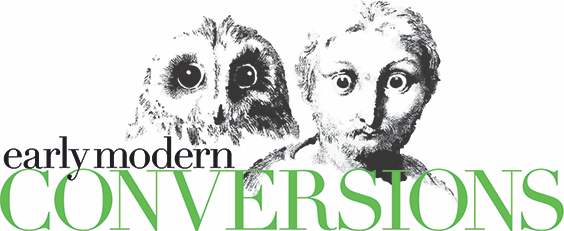[mvn-block role=”member”]
The meeting was a success! Listen to the proceedings in parts one through three below:
The Digital Humanities (DH) contingent of the early modern conversions project is beginning to grapple (in a good way) with visualization interfaces as a way of exploring and understanding our subject. For the DH week, I’d propose that we adopt a three-pronged strategy:
1) What is visualization for the humanities? This is not about studying visual culture, but rather about visual information design and interactivity. In a world dominated by scientific visualization, we need to reflect on our relationship with data and our interpretive practices in a visual context.
Strongly recommended: Johanna Drucker “Humanities Approaches to Graphical Display” http://www.digitalhumanities.
Additional reading: Sinclair & Co. “Information Visualization for Humanities Scholars” http://dlsanthology.commons.
2) What are some examples of geo-spatial-temporal visualizations that might guide our own efforts?
Strongly recommended: Mapping the Republic of Letters, and in particular, explore the interactive visualization athttp://www.stanford.edu/group/
3) What can we do, given our strengths and available resources? I will describe and present some of the preliminary work that has been done to prepare work on mapping Lima as a theatre of conversion.
[/mvn-block]

